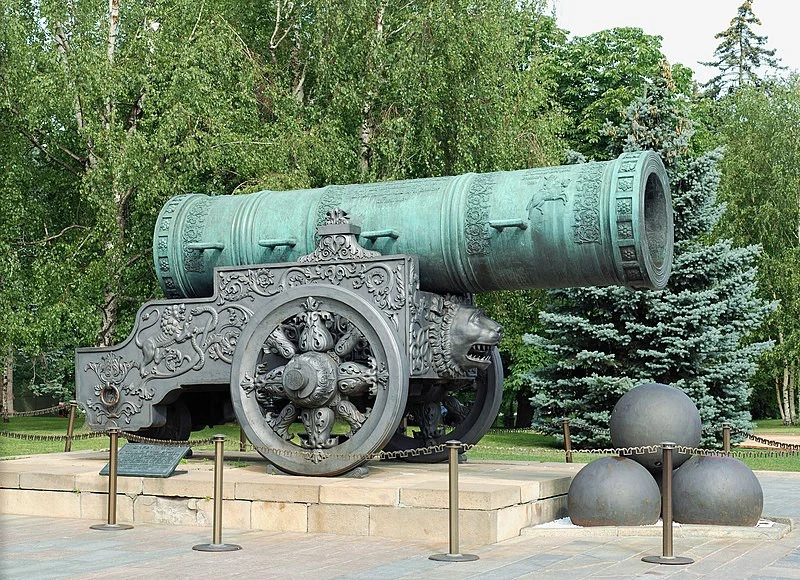
Oreshnik wreckage, Kurakhove challenges, and Ukraine’s bomber supply to Russia. Serhiy Zgurets' column
On December 4, Ukraine celebrates the Day of Missile Troops and Artillery. Artillery symbolizes firepower, while the missile component represents strikes. Regardless of the occasion, Ukrainian defenders continue to resist Russian forces across all frontline areas
Missile Forces and Artillery Day
I would like to start by congratulating the Ukrainian military on Missile Forces and Artillery Day. It is estimated that over 80% of Russian forces on the battlefield are neutralized by missile troops and artillery. While this figure may now be slightly influenced by FPV drone operators and long-range unmanned systems, the role of artillery remains unparalleled. In terms of firepower, firing speed, and all-weather effectiveness, artillery continues to be the "god of war," and Ukrainian artillerymen are the steadfast protectors of infantry, in both offensive and defensive operations.
Currently, the Ukrainian artillery brigades and the artillery units of mechanized or tank brigades are equipped with samples from various manufacturers. I think no army in the world today has such a diverse artillery arsenal. It includes the most modern, highly automated, nearly sniper-like Swedish Archers, German Panzerhaubitze 2000 howitzers, Czech DANA self-propelled artillery, Polish Krabs, French CAESARs, and Ukrainian Bohdanas, which are being produced at a pace of 20 units per month, a record for global manufacturers. Of course, there are also American Paladins and M-777s. All this weaponry destroys enemy forces, if only there were more shells. And, just as importantly, Ukraine needs more guns, because the example of Bohdana demonstrates how crucial it is to have domestic production during wartime.
Artillery provides the firepower, while the missile component delivers precision strikes. Systems like HIMARS and ATACMS are prime examples, but Ukraine also boasts its own long-range strike capabilities, particularly the Neptune cruise missile, capable of targeting Russian positions over 300 kilometers away. Defense Minister Rustem Umerov recently highlighted the development of an extended-range Neptune missile with significantly greater reach in his column. He also announced the serial production of Palianytsia missiles this year.
Furthermore, during his presentation of Ukraine's Resilience Plan to the Verkhovna Rada last month, President Volodymyr Zelenskyy outlined a goal: the production of 3,000 cruise missiles and missile drones. While these targets are optimistic, they underscore Ukraine's commitment to strengthening its missile forces and artillery to the fullest extent.
Once again, we extend our congratulations to the Ukrainian military on Missile Forces and Artillery Day.
Frontline update
Now, regarding the situation on the front line. We spoke about the success of Ukrainian forces on the right bank of the Oskil River, where Russian troops were driven out of their foothold in Novomlynsk. I will add a few details about the situation around Kurakhove, which remains extremely difficult. I will highlight just one aspect of these battles: Russian forces are consolidating in Stari Terny, to the north of Kurakhove.

We also know that fighting continues in Kurakhove itself. There is an industrial building, the Kurakhove thermal power plant, which is an important defense area, but now we need to balance these risks that are created after the capture of Stari Terny and the Russian advance to the west of this area.
It also poses certain threats to Ukrainian troops in the pocket south of Kurakhove, a ledge - Uspenivka, Hanivka, Veselyi Hai - where Ukrainian troops are located. I think that now, probably, there are activities related to the withdrawal from this pocket. I said this a week ago, but we can see that even despite all the difficult circumstances, Ukrainian soldiers are holding the line there. However, in any case, we understand that it is up to Ukraine's forces, reserves and military leadership to take into account all these risks and ensure the withdrawal of Ukrainian troops with maximum losses to enemy troops. That is what is actually happening now in this most tense section of the frontline.
Analysis of the Oreshnik wreckage
This is one of the more plausible explanations for why the Russians used this missile, but we will also delve into the technical details related to the Oreshnik.
Mykola Stelmakh, a retired Colonel of the Ukrainian Armed Forces, former Deputy Commander of the medium- and short-range missile regiment RSD-10 Pioneer, and previously the acting head of the department for nuclear disarmament control at the Ukrainian Armed Forces Verification Center, was invited to Dnipro to inspect the wreckage of the Oreshnik missile.
"We didn't make it to Dnipro; instead, we examined similar wreckage at another location and very thoroughly reviewed photographs of the wreckage. No matter what this missile is called, I prefer the name Boyaryshnik over Oreshnik. This is definitely not a serial model. It was just sitting in their warehouses as scrap metal, and they launched it so it wouldn’t go to waste. Maybe they had one or two missiles left, but there was absolutely no military sense in this. What we observed: the wreckage of the warhead and the separation block fell from a height of 140-137 kilometers, at a speed of 3,700 meters per second, as confirmed by objective control. This missile was designed for nuclear use and nothing else. So, they used the warhead casings simply as blanks,” said Mykola Stelmakh.
The colonel was the commander of a unit that was armed with medium- and short-range Pioneer missiles with nuclear warheads. He noted that the accuracy of these missiles was 120-150 meters.
Currently, Russia has returned to using medium-range missiles, betting on the Oreshnik as a propaganda tool to influence Ukraine and its partners. Looking at satellite images around Pivdenmash after the launch of the Oreshnik, it’s clear that there are no significant or substantial destruction. As the main Russian aggressor, Putin, said, this is achieved, so to speak, through kinetic impact due to the high speed of the strike warheads. In reality, we assessed the consequences and found that they are minimal given the missile's relatively low accuracy. So, it seems that achieving accuracy, even comparable to the Pioneer, is currently impossible for this missile system.
Transfer of strategic bombers to Russia
Mykola Stelmakh was the deputy head of the Ukrainian Armed Forces Verification Center, and during his time, Ukraine transferred strategic bombers Tu-160 to Russia, which are now, among other things, being used for missile strikes on Ukraine.
"The situation was very complicated. These aircraft were stationed in Uzyn and Pryluky. In Uzyn, there were Tu-95MS-6 and MS-16. In Pryluky, there were 19 Tu-160. In Pryluky, part of the personnel did not want to give these complexes away. Some were waiting to fly these planes to Russia. So, the situation was very unclear. And let’s remember what time it was. Back then, friendship with Russia was promoted at every level. Every meeting of defense ministers of the CIS states at the military cooperation coordination headquarters ended with a toast to the friendship between the Ukrainian and Russian armies. When discussions arose about the possibility of fighting, even though it was said that we would definitely fight starting from 2017, this was strictly discouraged. And the mentality of our people was such that Russia was a brother, and the Americans were enemies. And, unfortunately, these planes and 575 missiles were handed over," said retired Colonel of the Ukrainian Armed Forces, veteran of strategic missile forces Mykola Stelmakh.
This story serves as a stark reminder that with Russia, we must always be prepared for war. This is the only logical conclusion to be drawn from it.

Tsar Cannon Oreshnik
Now, let's return briefly to the topic of the Oreshnik and recall some historical analogies. In the history of the Moscow state, there was a similar case of a weapon whose symbolic weight exceeded its combat effectiveness, which was essentially nonexistent. This is the famous Tsar Cannon, created in the 16th century and still displayed in the Kremlin. The weight of this cannon remarkably matches the launch weight of the Oreshnik - up to 40 tons. The weight of the gun, like the Oreshnik, is also comparable: when firing a stone projectile, it weighs 1 ton, and when firing a bronze one, up to 2 tons. This also corresponds to the mass of the warhead of the Oreshnik.
The Tsar Cannon was never fired, as doing so would likely have caused it to explode. It was once prepared for combat to defend against the forces of the Khan across the Moskva River, but the shot never occurred. The true purpose behind creating the Tsar Cannon was symbolic—it was placed near the location where decrees of the Russian Tsar were announced. At the time, Tsar Fyodor Ivanovich, if memory serves, was regarded as lacking authority, and the cannon was meant to enhance the perceived weight of his words.
In any case, this tsar turned out to be the last of his dynasty. After his death, the Russian state plunged into the Time of Troubles. We will see what happens now in the Russian Federation in light of Oreshnik and the other events accompanying its actions.
- News












































